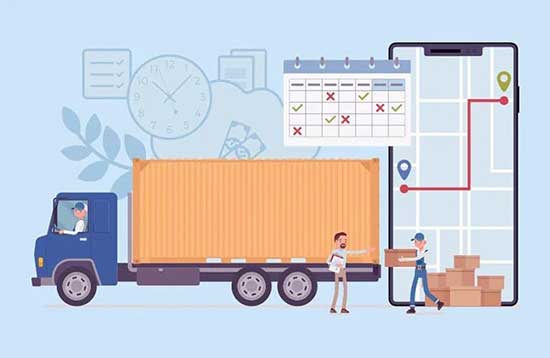
The Hidden Costs of Poor Delivery SLA Adherence in 3PLs: Why It Matters
The Hidden Costs of Poor Delivery SLA Adherence in 3PLs: Why It Matters
6:07
Published :

A 3PL client calls at 4 PM, angry that their priority shipment is still “in transit” despite a 2 PM Service Level Agreement (SLA). The ops manager checks logs, spots the traffic delay, but it’s too late. No alert, no update, no backup plan. This scenario plays out daily across 3PL operations running on fragmented tools instead of an integrated 3PL software system.
But the real damage isn’t the missed delivery window; it’s what happens next - penalties, lost contracts, and damaged trust. When 3PL software systems fail to track and communicate in real time, clients leave and take others with them. It exposes the true cost of poor delivery SLA adherence in 3PLs and outdated 3PL transportation management software. Chronic shipment delays can also trigger detention and demurrage penalties, sometimes amounting to 15% of a shipment’s total value, adding financial strain to already fragile margins.
This operational chaos isn't random; it stems from four systematic failures in how most 3PL software systems handle delivery SLA adherence in 3PLs. Each breakdown point compounds the others, creating a cascade of relationship damage that extends far beyond individual delivery failures.

Without real-time visibility, scheduling becomes guesswork. A truck delayed by traffic or held up at a loading dock isn't flagged in time. By the time someone checks manually, the SLA is already broken, and there’s no room left to recover.
Many 3PL warehouse management software tools still rely on batch updates or driver calls. There’s no automated alert when a delivery is at risk of missing its SLA. That means no backup plan, no rerouting, and no client notification, until it’s too late.
SLA compliance managed through spreadsheets or siloed systems is a recipe for oversight. With multiple clients, varying SLA terms, and complex shipping patterns, something always slips through. The best 3PL software avoids this by automating SLA monitoring across shipments.
When tracking is delayed, so is the response. Ops teams find out after the fact, customer service scrambles for answers, and clients are left frustrated. Every delayed update weakens trust, especially in high-value or time-sensitive deliveries.
Each of these failures may seem small in isolation. But together, they position a 3PL at a clear disadvantage, especially when competitors offer tighter tracking, faster alerts, and consistent SLA performance. For providers looking to stay relevant, SLA visibility isn't a feature. It’s the baseline.
Fixing SLA performance isn't about working harder. It's about working with the right tools. A modern transportation management system takes SLA management out of spreadsheets and into real-time, connected control.
Ramco's Transportation Management System exemplifies how advanced TMS software changes the game for 3PLs.

Ramco’s TMS software gives ops teams live visibility into every shipment's location. Geofencing adds context, triggering alerts when a vehicle enters or exits a delivery zone. No more waiting for driver updates or chasing down ETAs.
Dashboards show at a glance which shipments are at risk of missing SLAs. If a delay threatens compliance, the system sends automatic alerts, allowing the team to act early, not after the damage is done.
A robust logistics management system factors in live traffic, weather, road closures, and delivery time windows to recommend better routes. It predicts delays before they happen and suggests alternatives that help 3PLs stay within SLA targets.
Delays happen, but how you handle them matters. Ramco’s TMS automates exception management by rerouting shipments where possible and notifying clients immediately. This prevents the breakdown in communication that usually turns a minor delay into a lost contract.
SLA performance isn't just about transport. It starts in the warehouse. A good TMS tool like Ramco’s that integrates with 3PL warehouse management software enables smooth handoffs, syncing pick times, dock scheduling, and load readiness with transport timelines.
Dashboards and reports don’t just track misses; they explain them. Ops leaders can view SLA trends by client, lane, carrier, or time window. This helps teams fix recurring issues at the root, not just put out fires.
In short, Ramco’s transportation management system goes beyond tracking shipments; it manages delivery SLA adherence in 3PLs. For 3PLs looking to meet modern SLA expectations, TMS software isn’t optional; it’s the operational backbone that keeps promises on time.
SLA failures are more than delivery issues; they are business risks. In many contracts, SLA violations come with steep financial consequences, 1–2% of a purchase order’s value per day of delay, with cumulative penalties sometimes capped at 10% or more of the contract value.
In a market where timelines define trust, reactive systems fall short. Today’s 3PLs need transportation management solutions that sync warehouse operations, predict delays, and act fast to ensure delivery SLA adherence in 3PLs.A robust TMS software does exactly that, keeping service commitments intact.
Ready to move from firefighting to foresight? Explore how Ramco’s Transportation Management System helps 3PLs deliver on time, every time.
Enterprise asset management (EAM) involves the management of mission critical assets of an organization throughout each asset's lifecycle. EAM is used to plan, optimize, execute, and track the needed maintenance activities with the associated priorities, skills, materials, tools, and information. The aim is to optimize the quality and utilization of assets throughout their lifecycle, increase productive uptime and reduce operational costs.
Enterprise asset management (EAM) involves the management of the maintenance of physical assets of an organization throughout each asset's lifecycle. EAM is used to plan, optimize, execute, and track the needed maintenance activities with the associated priorities, skills, materials, tools, and information.
The software helps in effective maintenance of assets through preventive, predictive, shutdown and breakdown maintenance strategies. The system also helps enterprises mitigate equipment risks by enhanced safety standards. The streamlined operations and improved asset performance helps organizations increase their investment effectiveness.
EAM is important because it helps organizations track, assess, manage and optimize asset quality and reliability. Asset intensive Organizations have hundreds, thousands, even millions of assets which needs to be maintained to maximize / optimize life of these assets to increase the return on investment.
The key features of effective EAM are:
Asset Intensive companies under the following Industries :
Contact us for a meeting and schedule a demo
This differs on case to case basis, based on the type of installation and unique industry specific requirements. Contact us for a meeting and schedule a demo.
This differs on case to case basis, based on the type of installation and unique industry specific requirements. Contact us for a meeting and schedule a demo.
Stay Connected, follow us on LinkedIn / Twitter to know more about EAM Software latest trends.

All Rights Reserved. © Copyright 2024. Ramco Systems.